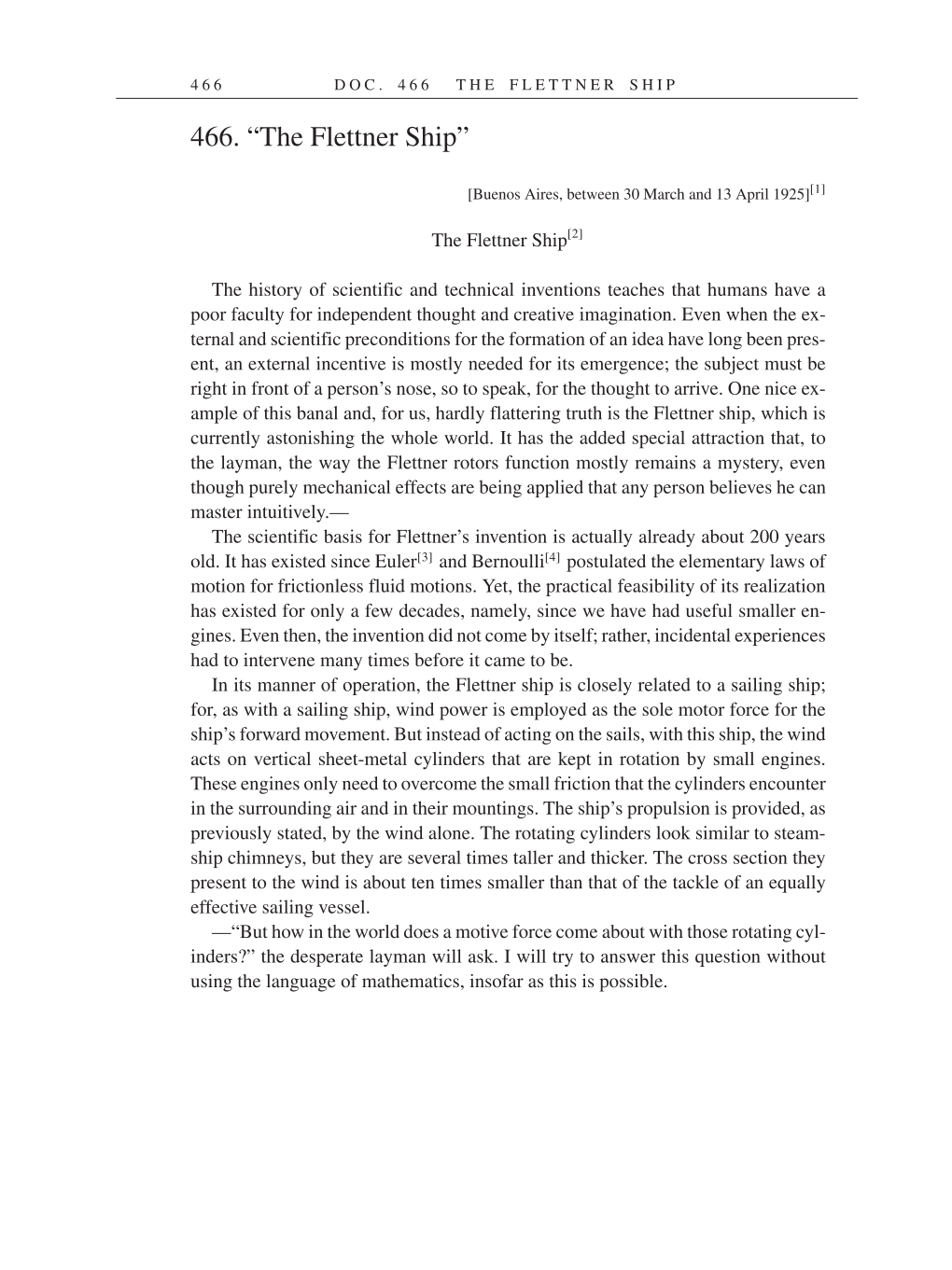4 6 6 D O C . 4 6 6 T H E F L E T T N E R S H I P
466. “The Flettner Ship”
[Buenos Aires, between 30 March and 13 April
1925][1]
The Flettner
Ship[2]
The history of scientific and technical inventions teaches that humans have a
poor faculty for independent thought and creative imagination. Even when the ex-
ternal and scientific preconditions for the formation of an idea have long been pres-
ent, an external incentive is mostly needed for its emergence; the subject must be
right in front of a person’s nose, so to speak, for the thought to arrive. One nice ex-
ample of this banal and, for us, hardly flattering truth is the Flettner ship, which is
currently astonishing the whole world. It has the added special attraction that, to
the layman, the way the Flettner rotors function mostly remains a mystery, even
though purely mechanical effects are being applied that any person believes he can
master intuitively.—
The scientific basis for Flettner’s invention is actually already about 200 years
old. It has existed since Euler[3] and Bernoulli[4] postulated the elementary laws of
motion for frictionless fluid motions. Yet, the practical feasibility of its realization
has existed for only a few decades, namely, since we have had useful smaller en-
gines. Even then, the invention did not come by itself; rather, incidental experiences
had to intervene many times before it came to be.
In its manner of operation, the Flettner ship is closely related to a sailing ship;
for, as with a sailing ship, wind power is employed as the sole motor force for the
ship’s forward movement. But instead of acting on the sails, with this ship, the wind
acts on vertical sheet-metal cylinders that are kept in rotation by small engines.
These engines only need to overcome the small friction that the cylinders encounter
in the surrounding air and in their mountings. The ship’s propulsion is provided, as
previously stated, by the wind alone. The rotating cylinders look similar to steam-
ship chimneys, but they are several times taller and thicker. The cross section they
present to the wind is about ten times smaller than that of the tackle of an equally
effective sailing vessel.
—“But how in the world does a motive force come about with those rotating cyl-
inders?” the desperate layman will ask. I will try to answer this question without
using the language of mathematics, insofar as this is possible.
